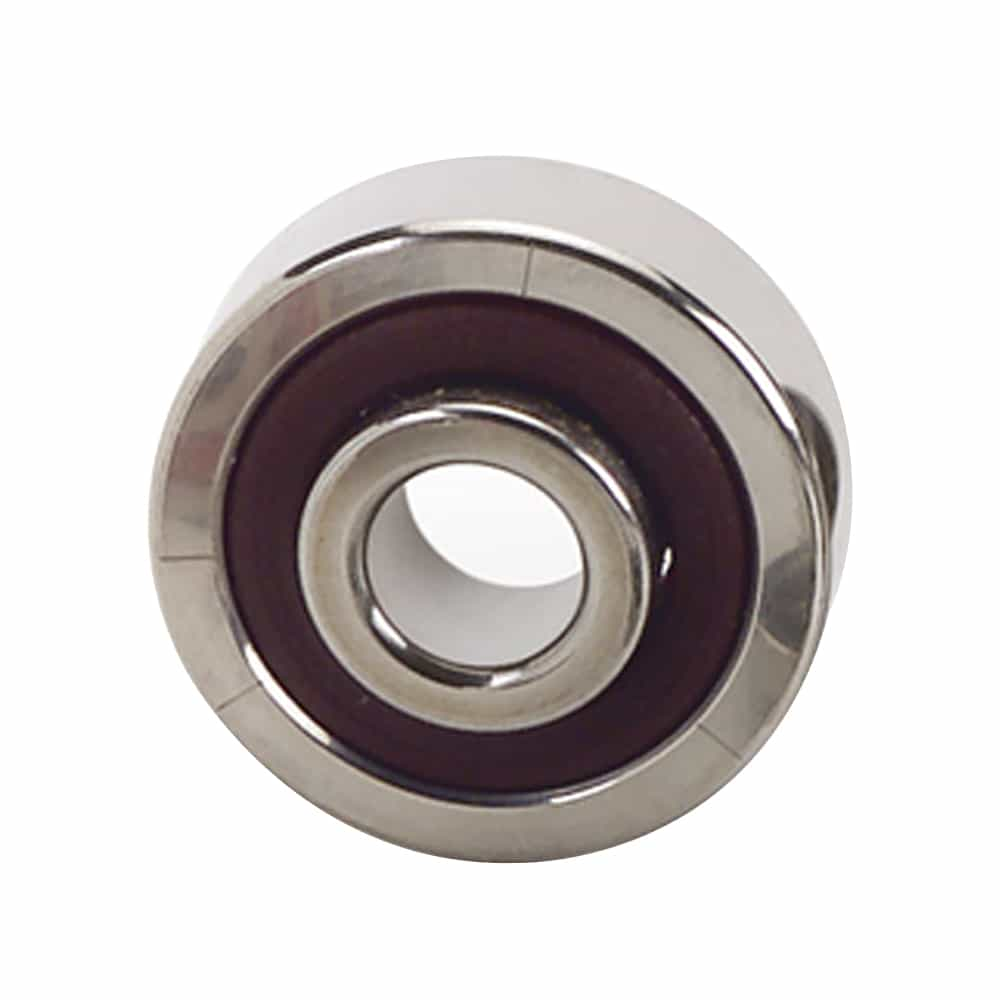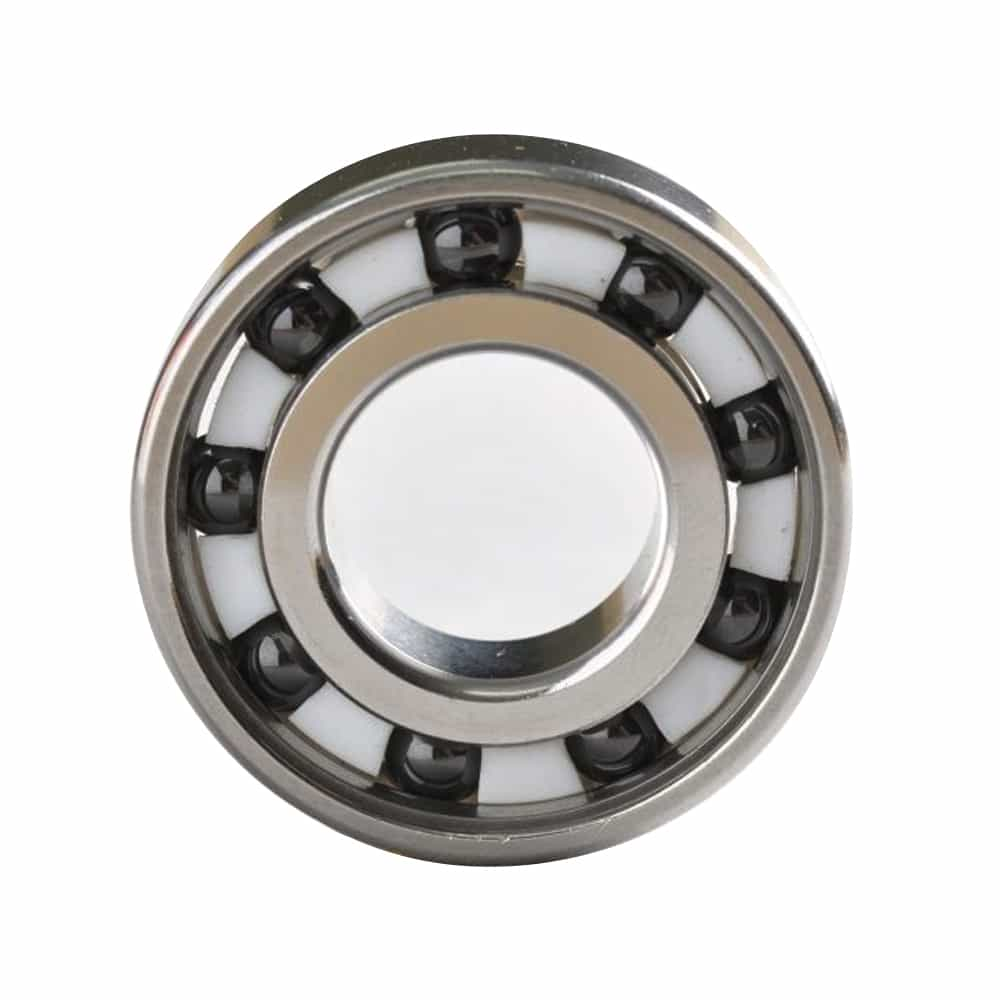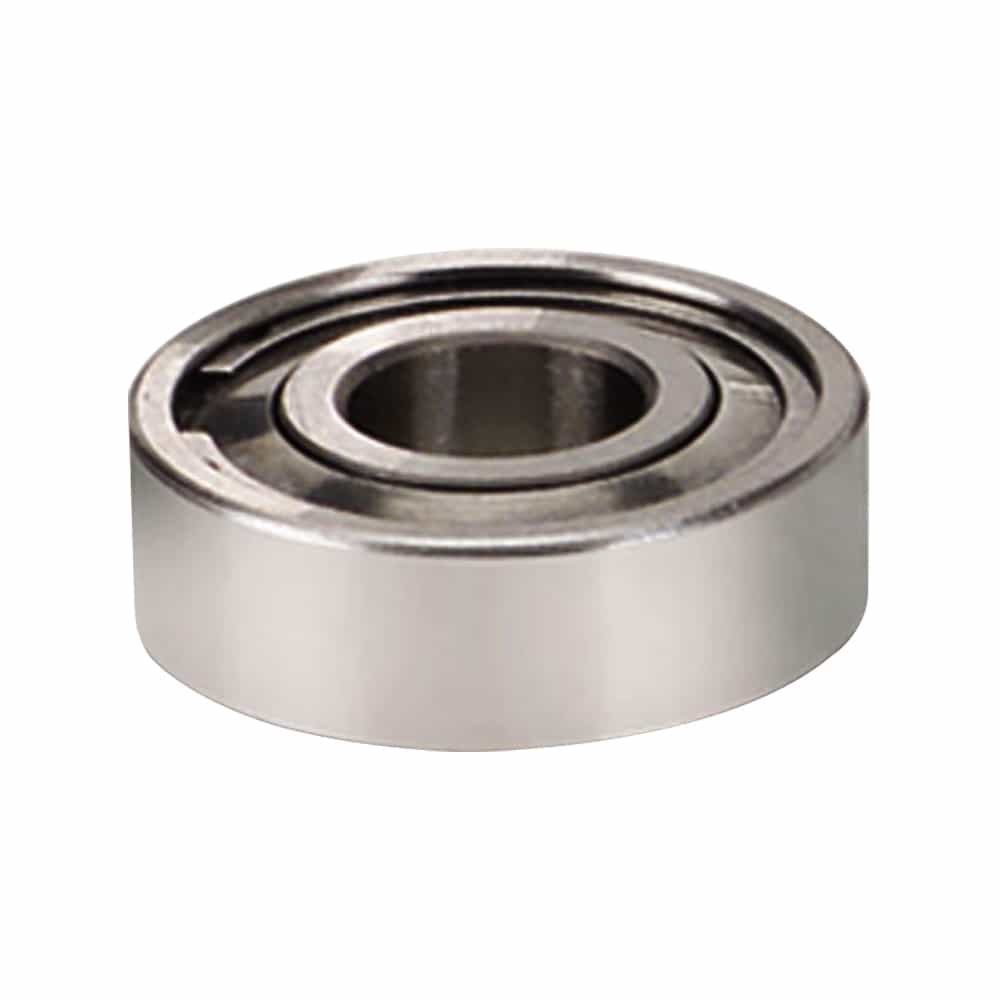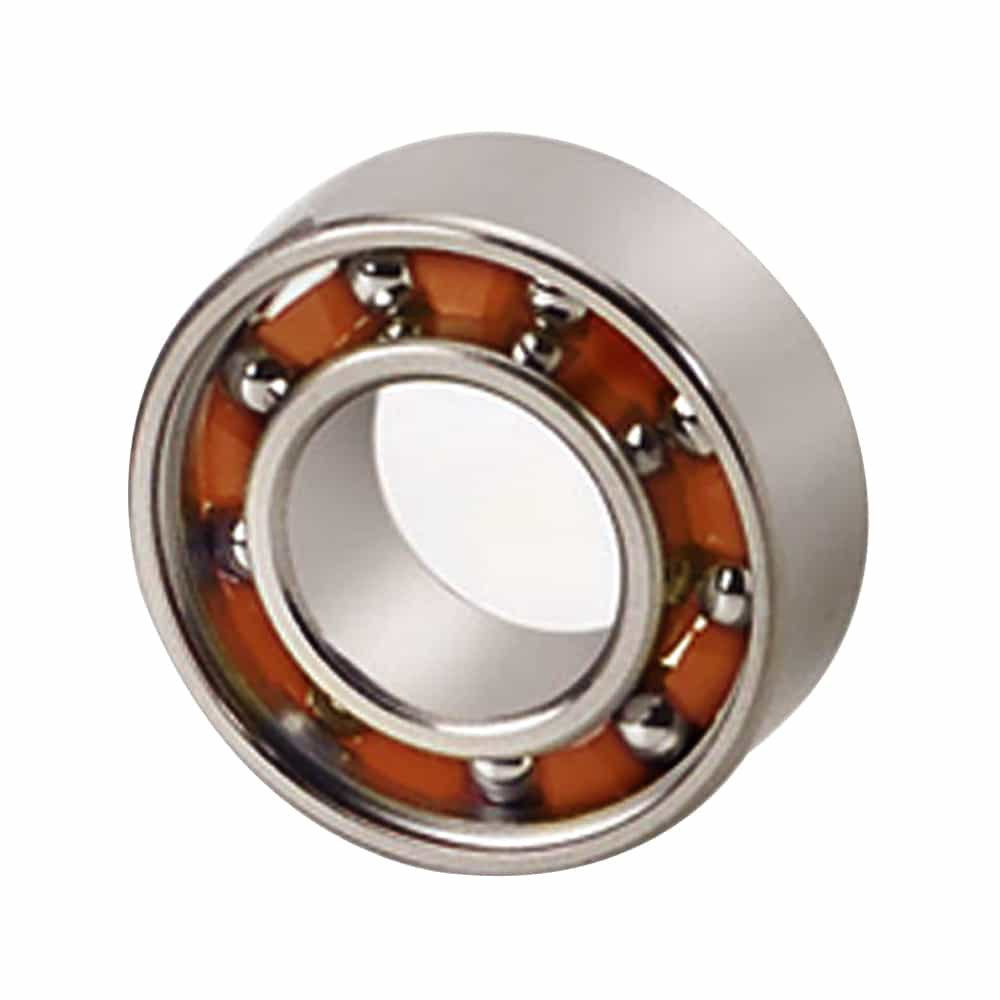Ceramic vs. Stainless Steel: Choosing the Best Dental Bearings
Dental bearings are vital for the precision, smooth operation, and durability of dental handpieces. Choosing the right dental bearings, whether ceramic or stainless steel, is vital for your handpiece's performance. Each type plays a key role in extending the equipment's lifespan.
This blog offers a clear comparison to help dental professionals choose the best dental bearings for their practice. This ensures optimal performance and longer-lasting equipment.
Understanding Dental Bearings
Dental bearings are precision-engineered components located within the head of a dental handpiece. Their primary function is to allow the handpiece's rotor to spin at high speeds with minimal friction. This ensures smooth, efficient operation during dental procedures, which is critical for both the dentist and the patient.
The quality of bearings in a dental handpiece directly affects its efficiency, noise levels, and lifespan. Poor-quality bearings can lead to increased wear and tear, frequent maintenance, and even premature failure of the handpiece.

Types of Dental Bearings
Radial Bearings vs. Angular Contact Bearings
- Radial Bearings: They usually have a crown retainer. You can load them axially from either side, providing convenience in various applications. However, they may not perform as well at high speeds.
- Angular Contact Bearings: Designed with a full retainer, these bearings support combined loads (both radial and axial) more effectively. Available for high-speed operations, they have a longer lifespan. They also perform better under stress.
Ceramic Bearings vs. Stainless Steel Bearings
- Ceramic Bearings: Ceramic bearings are made from materials like zirconia or silicon nitride, known for their high hardness. They also offer low friction and excellent heat resistance. They are often chosen for their longer lifespan and quieter operation.
- Stainless Steel Bearings: Made from high-grade stainless steel, these bearings are durable and cost-effective. They are widely used in various applications due to their strength and resistance to corrosion.
Ceramic Dental Bearings
Composition and Properties
Material Composition
Ceramic dental bearings are typically made from advanced ceramic materials such as zirconia or silicon nitride. These materials are known for their exceptional hardness, lightweight, and resistance to heat and wear.
Key Properties
- High Hardness: Ceramic bearings are much harder than their stainless steel counterparts. This hardness makes them more resistant to wear and tear.
- Low Friction: The smooth surface of ceramic bearings results in lower friction during operation. This reduction in friction decreases heat generation and extends the bearing's lifespan.
- Heat Resistance: Ceramic bearings can withstand higher temperatures without degrading. This makes them ideal for high-speed applications where heat generation is a concern.
Advantages of Ceramic Bearings
- Longer Lifespan: Ceramic bearings are known for their durability. Their resistance to wear means they do not degrade as quickly as stainless steel bearings. This leads to fewer replacements and consistent performance over time.
- Smooth, Precise Operations: The low friction of ceramic bearings reduces the heat generated during high-speed operations. This extends the working life of the handpiece. It also ensures smoother and more precise movements, enhancing the quality of dental procedures.
- Quieter Operation: Ceramic bearings produce less noise and vibration compared to stainless steel bearings. This results in a quieter operation, which can significantly improve the patient experience by reducing anxiety associated with noisy dental tools.
- Reduced Maintenance: Ceramic bearings have self-lubricating properties, so they often need less frequent maintenance. This saves time and reduces the overall cost of ownership.

Disadvantages of Ceramic Bearings
- Higher Upfront Cost: The initial cost of ceramic bearings is higher compared to stainless steel bearings. This higher cost often balances out due to their longer lifespan and reduced maintenance needs.
- Potential Fragility: While ceramic bearings are extremely hard, they can be more brittle than stainless steel. This means they may be more prone to cracking or chipping under extreme conditions, such as sudden impacts or high loads.
Stainless Steel Dental Bearings
Composition and Properties
Material Composition
Stainless steel bearings are made from high-grade stainless steel, which is known for its strength, durability, and resistance to corrosion.
Key Properties
- Durability: Stainless steel bearings are tough and can withstand significant stress without deforming.
- Corrosion Resistance: These bearings use stainless steel, which resists corrosion. This resistance is crucial for maintaining performance in the moist environment of the oral cavity.
- Cost-Effectiveness: Stainless steel bearings generally cost less than ceramic bearings. This makes them an attractive option for budget-conscious practices.
Advantages of Stainless Steel Bearings
- Affordability: Stainless steel bearings are more affordable than ceramic bearings. This makes them a practical choice for many dental practices, especially those with budget constraints.
- Strength and Durability: These bearings are strong and durable, capable of withstanding the rigors of daily use in a dental practice. They are less likely to crack or chip compared to ceramic bearings.
- Wide Availability: Stainless steel bearings are widely available and have been a trusted choice in the industry for many years.

Disadvantages of Stainless Steel Bearings
- Higher Friction and Heat Generation: Stainless steel bearings generate more friction than ceramic bearings, leading to higher operating temperatures. This can result in more wear and tear, reducing the bearing's lifespan.
- Shorter Lifespan: Stainless steel bearings generate more friction and wear faster than ceramic bearings. This usually results in a shorter lifespan, particularly in high-speed applications.
- Increased Maintenance Needs: Stainless steel bearings require regular maintenance, including lubrication, to maintain their performance and prevent premature failure.
Factors to Consider When Choosing the Best Dental Bearings
Application Needs
- Specific Dental Procedures: Consider the types of dental procedures your practice performs most frequently. High-speed, precision procedures may benefit more from using ceramic bearings because of their smooth operation. Additionally, ceramic bearings help reduce noise during these procedures.
- Handpiece Type: The type of handpiece you use—whether high-speed or low-speed—will also influence your choice. Ceramic bearings are generally better suited for high-speed handpieces. In contrast, stainless steel bearings may be sufficient for low-speed applications.
Cost vs. Longevity
Ceramic bearings have a higher upfront cost. However, their longer lifespan and reduced maintenance needs can make them more cost-effective in the long run. Conversely, stainless steel bearings may be more affordable initially but could require more frequent replacements and maintenance.
Maintenance Requirements
- Frequency of Maintenance: Ceramic bearings often require less maintenance because of their self-lubricating properties. If your practice prefers low-maintenance equipment, ceramic bearings might be the better choice.
- Impact on Running Costs: Regular maintenance of stainless steel bearings can add to the overall cost of ownership. Consider the availability of maintenance services and the impact on your practice's efficiency.
Performance Requirements
Evaluate the performance demands of your practice. If high-speed, low-noise operations are crucial, ceramic bearings offer significant advantages. For general use, stainless steel bearings may provide sufficient performance at a lower cost.

Making the Right Choice: Ceramic vs. Stainless Steel
Case Studies and Examples
- High-Speed Dental Procedures: For practices that frequently perform high-speed drilling or cutting, ceramic bearings offer superior performance. They reduce heat and noise while extending the life of the handpiece.
- General Dentistry: In practices focused on general dentistry, where speed demands are lower, stainless steel bearings have been effective. They provide a cost-effective solution without significantly compromising performance.
Recommendations
When to Choose Ceramic Bearings?
Opt for ceramic bearings if your practice demands high precision, low noise, and long-lasting performance. They are especially beneficial in specialized procedures that require minimal disruption and maximum patient comfort.
When to Choose Stainless Steel Bearings?
Stainless steel bearings are ideal for practices that require a durable, cost-effective solution for general dental procedures. They are reliable and sufficient for low to moderate-speed applications.
Conclusion
When choosing the best dental bearings, ceramic options offer high-speed precision, while stainless steel provides durable, cost-effective performance.The best choice depends on your practice’s specific requirements, balancing cost, performance, and maintenance needs. To make an informed decision, consider consulting with LILY Bearing to find the best dental bearings for your practice.
Keep Learning








